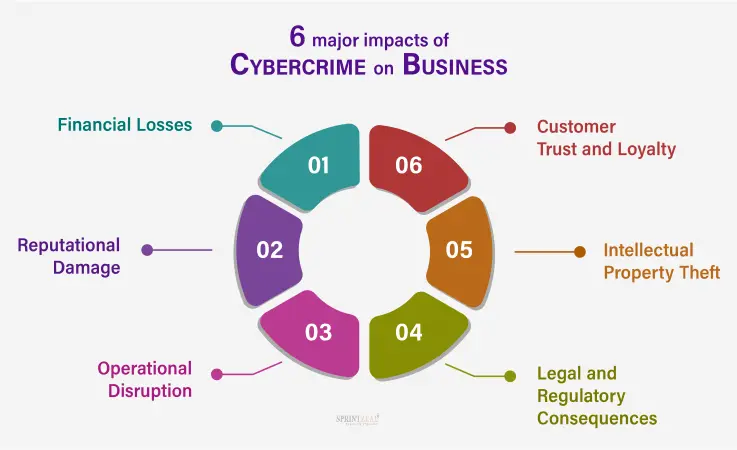Title: Cybercrime and Its Impact on Businesses
In the digital age, businesses have embraced technology as a cornerstone of their operations. While this shift has brought about numerous advantages, it has also exposed organizations to new threats in the form of cybercrime. Cybercrime encompasses a wide range of malicious activities conducted in the digital realm, such as hacking, phishing, ransomware attacks, and data breaches. This article explores the various facets of cybercrime and delves into its profound impact on businesses.
The Evolving Landscape of Cybercrime
Cybercrime is an ever-evolving menace. As technology advances, so too do the tactics employed by cybercriminals. The motivation behind these attacks varies, ranging from financial gain to political motives or even personal vendettas. This constant evolution challenges businesses to stay ahead of the curve in terms of cybersecurity.
Financial Consequences
One of the most immediate and tangible impacts of cybercrime on businesses is financial loss. Cyberattacks can result in substantial costs related to data recovery, system repairs, legal fees, and regulatory fines. Furthermore, organizations may suffer significant revenue losses due to downtime and damage to their reputation. A high-profile cyberattack can erode customer trust and lead to a loss of business.
Data Breaches and Privacy Concerns
Data breaches represent a severe threat to businesses, particularly those that handle sensitive customer information. When customer data is compromised, the consequences can be far-reaching. In addition to financial repercussions, companies may face lawsuits and regulatory penalties for failing to protect customer data adequately. Moreover, customer trust can be shattered, potentially leading to a loss of customers and long-term damage to the brand’s reputation.
Intellectual Property Theft
Cybercriminals often target businesses to steal intellectual property, trade secrets, and proprietary information. This theft can have devastating consequences, as it can enable competitors or malicious actors to gain an unfair advantage. Businesses invest heavily in research and development, and the loss of intellectual property can undermine their competitiveness and innovation capabilities.
Ransomware Attacks
Ransomware attacks have become increasingly prevalent in recent years. In these attacks, cybercriminals encrypt a company’s data and demand a ransom for its release. Falling victim to a ransomware attack can paralyze a business, disrupt operations, and lead to significant financial losses. Even if the ransom is paid, there is no guarantee that the data will be fully restored, and the organization may remain vulnerable to future attacks.
Supply Chain Vulnerabilities
Businesses often rely on complex supply chains to source products and services. Cyberattacks on suppliers can have a ripple effect, impacting the entire supply chain and disrupting a company’s ability to meet customer demand. Businesses must assess the cybersecurity practices of their suppliers and take measures to mitigate supply chain vulnerabilities.
Regulatory and Legal Challenges
Governments and regulatory bodies are increasingly imposing stringent cybersecurity regulations and requirements on businesses. Failing to comply with these regulations can result in significant fines and legal consequences. Moreover, businesses may find themselves entangled in legal battles with affected customers or partners, further exacerbating the impact of cybercrime.
Mitigating Cybercrime Risks
To mitigate the risks associated with cybercrime, businesses must adopt a proactive approach to cybersecurity. This includes implementing robust security measures, regularly updating and patching systems, conducting employee training on cybersecurity best practices, and establishing an incident response plan. Additionally, businesses should consider investing in cyber insurance to help mitigate the financial impact of a cyberattack.

Conclusion
Cybercrime is a persistent and ever-evolving threat that poses significant challenges to businesses of all sizes and industries. The financial, reputational, and operational consequences of cyberattacks can be severe. To protect themselves, organizations must prioritize cybersecurity, stay vigilant against emerging threats, and collaborate with industry experts and government agencies to enhance their resilience to cybercrime. In today’s digital landscape, cybercrime is not a matter of if but when, making preparedness and prevention paramount for businesses to thrive in an increasingly connected world.
Author:- Apurva arora, a Student of Lloyd school of law


